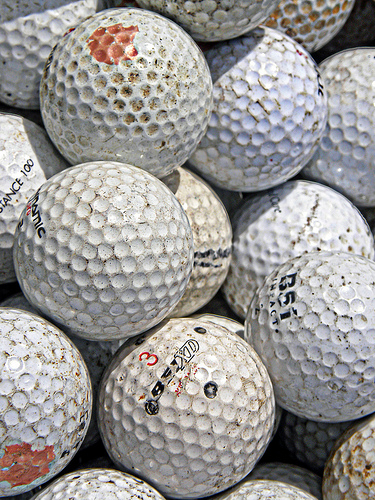What is Data? [Oct. 15, 2012, 10:57 a.m.]
Data is all around us. But what exactly is it? Data is a value assigned to a thing. Take for example the balls in the picture below.
What can we say about these? They are golf balls, right? So one of the first data points we have is that they are used for golf. Golf is a category of sport, so this helps us to put the ball in a taxonomy. But there is more to them. We have the color: “white”, the condition “used”. They all have a size, there is a certain number of them and they probably have some monetary value, and so on.
Even unremarkable objects have a lot of data attached to them. You too: you have a name (most people have given and family names) a date of birth, weight, height, nationality etc. All these things are data.
In the example above, we can already see that there are different types of data. The two major categories are qualitative and quantitative data.
Qualitative data is everything that refers to the quality of something: The color, the texture, the feel, a description of experiences, and interview are all qualitative data.
Quantitative data is data that refers to a number. E.g. the number of golf balls, the size, the price, a score on a test etc.
However there are also other categories that you will most likely encounter:
Categorical data puts the item you are describing into a category: In our example the condition “used” would be categorical (with categories such as “new”, “used” ,”broken” etc.)
Discrete data is numerical data that has gaps in it: e.g. the count of golf balls. There can only be whole numbers of golf ball (there is no such thing as 0.3 golf balls). Other examples are scores in tests (where you receive e.g. 7/10) or shoe sizes.
Continuous data is numerical data with a continuous range: e.g. size of the golfballs can be any value (e.q. 10.53mm or 10.54mm but also 10.536mm), or the size of your foot (as opposed to your shoe size, which is discrete): In continuous data, all values are possible with no gaps in between.
Task: Take the example of golf balls: can you find data of all different categories?



